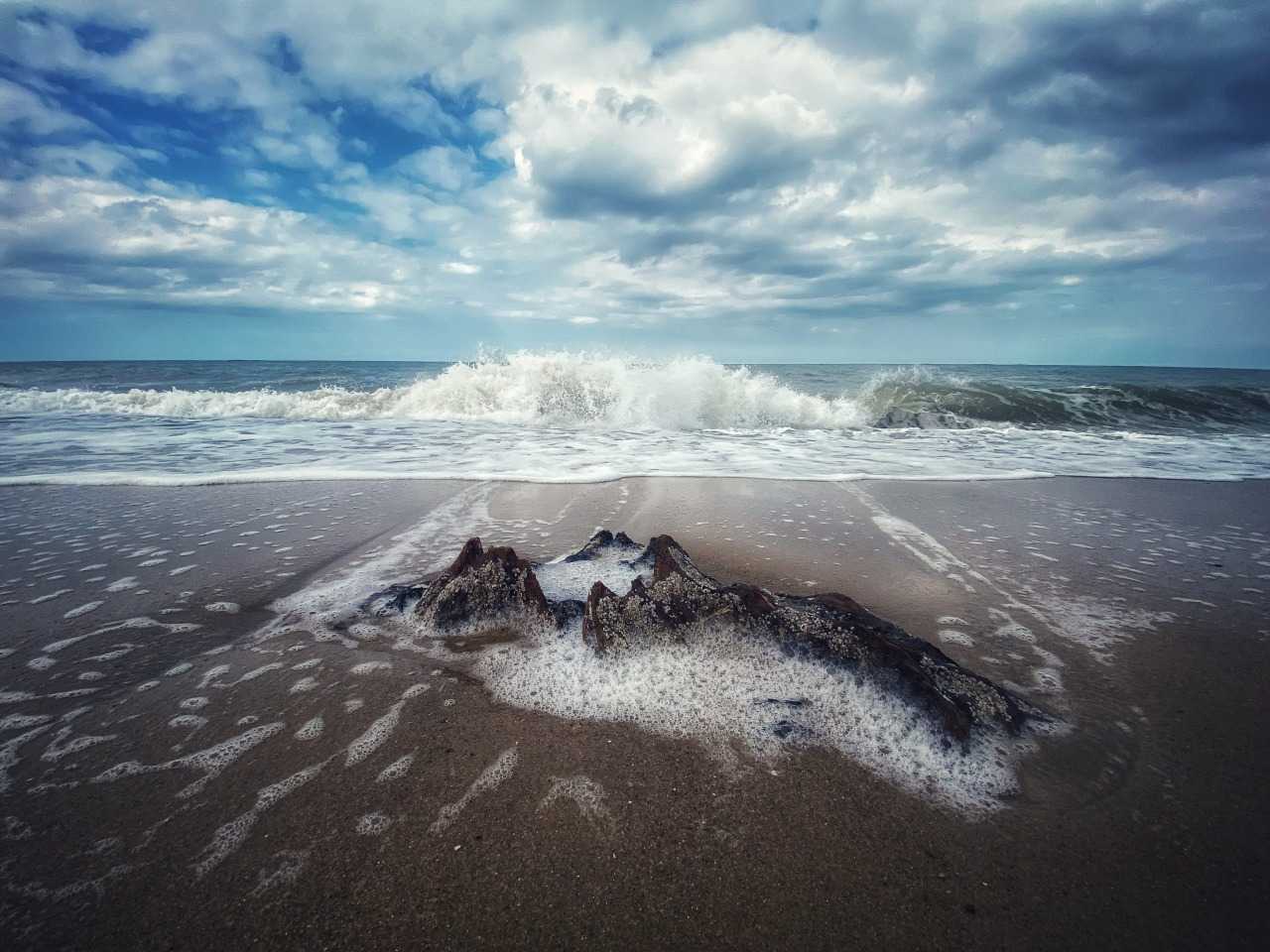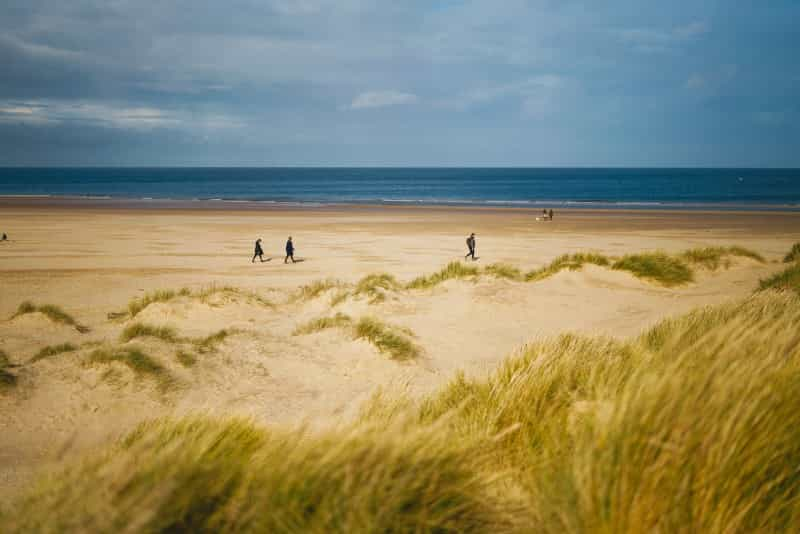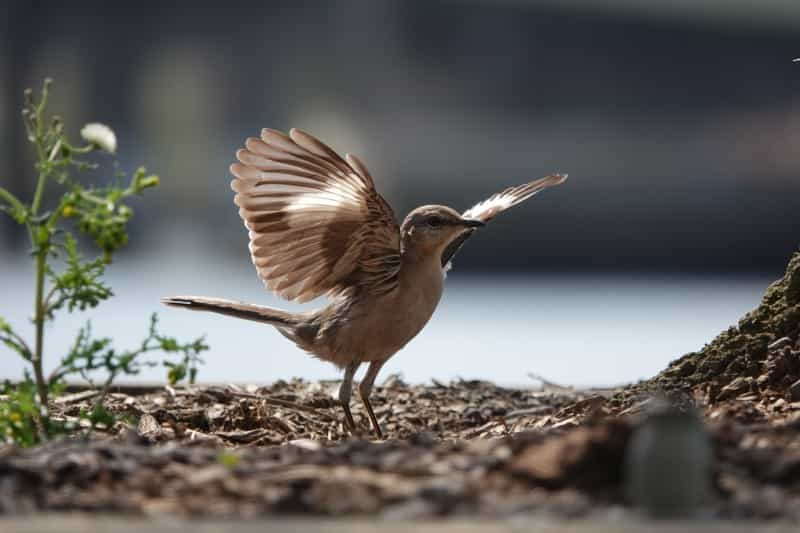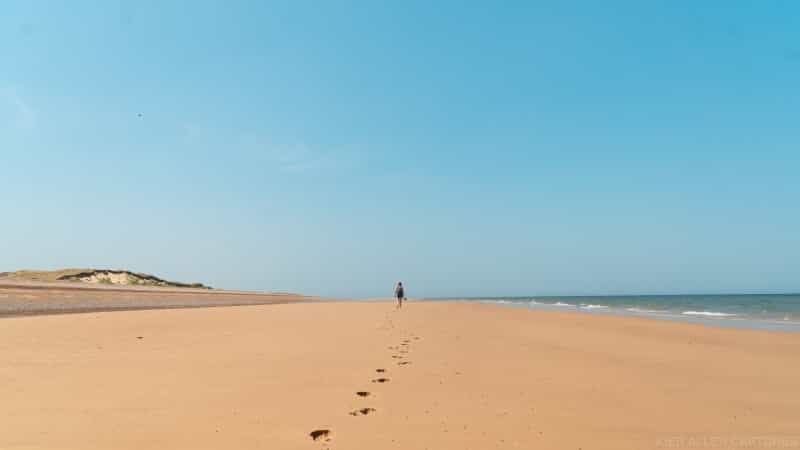Walking Norfolk’s Coast Path
If you love a good walking holiday, then you simply must explore the spectacular Norfolk Coast Path National Trail. It covers 83 miles of coastline from Hunstanton to Hopton-on-Sea and is a wonderful way to experience the dramatic landscape of the Norfolk Coast Area of Outstanding Natural Beauty on foot.
You’re likely to make some special memories here, whether you’re gallivanting through the pine forests at Holme Dunes, seal spotting at Blakeney Point, or birdwatching at Cley and Saltwater Marshes. Spend your afternoon strolling along the sandy beaches at Sea Palling and Wells next-the-Sea or pottering around the seaside towns of Hunstanton and Great Yarmouth.
On average, the Norfolk Coast Path takes three days to complete, so before you visit make sure you check out some of our recommended campsites nearby. It’s also a good idea to refer to an interactive map when planning your routes, so that you can really make the most of your time in each area and avoid missing any highlights.
Now, dust off your walking boots and get ready for an adventure along the Norfolk Coast Path…

Hunstanton
Let’s start at the beginning of the route in Hunstanton, a popular seaside resort at the most westerly point of the Norfolk Coast Path. It was purpose built in 1846 and still retains much of its Victorian charm today.
For a shorter jaunt, there’s a seven-mile circular walking trail here that will take you from the town centre to Holme Dunes Nature Reserve and back, via the narrow paths that run parallel to the river Hun. If it’s low tide, walk back along the beach and admire the eye-catching red and white striped cliffs. Whichever route you take, the landscape and coastal scenery are sure to be sublime.
Take a look at some campsites in Hunstanton to use as a base.
Holme Dunes
Next on our list is Holme Dunes, a quiet beach and nature reserve near the small village of Holme next-the-Sea.
There are many different and important habitats here including sand dunes,salt marshes, freshwater pools and pine forests. A variety of interesting wildlife species thrive in this largely undisturbed expanse too, so keep your eyes peeled for butterflies, dragonflies and the odd natterjack toad.
You can walk for as long or as little as you like at Holme Dunes. If you’re in the mood for a short stroll, then head to the Norfolk Wildlife Trust Nature Reserve tea room which is about a mile and a half away from the beach car park.
If you really want to stretch your legs, try the circular walk to Thornham via the scented pine forest. This route is around six miles long in total – and if you can’t manage the walk back to Holme, then just jump on the number 36 Coastliner bus.
Visit some more of Norfolk’s beaches where you’re here.

Brancaster
Brancaster has one of the best sandy beaches in Norfolk, as well as a busting harbour and Branodunum Roman fort – one of 11 Saxon shore forts originally built to stop the Frisians, Angles and Saxons invading from across the North Sea.
There are a couple of walking trails to choose from here, both of which are easy five-mile circular routes.
The first takes you across a small stream to Titchwell Marsh RSPB reserve, where you’ll see lots of different varieties of birds and habitats. You’ll be able to walk the path freely here, but dogs must be kept on leads at all times.
The other option is to saunter around Brancaster Staithe, starting at the highpoint at Barrow Common. It’s the site of a small hill thought to be a round barrow (a mound of earth raised over a place of burial during the Bronze Age). You’ll then pass the creeks of Brancaster Marsh before finishing up near the small village of Burnham Deepdale.
Browse our list of campsites in Brancaster where you can spend a night or two.
Wells-next-the-Sea
Wells-next-the-Sea is an attractive and family-friendly destination, with miles of sand to explore and colourful beach huts to photograph. Like many of the places on the coast path, Wells is in an Area of Outstanding Natural Beauty, so expect stunning scenery and impressive views.
Amble along the beach through the pinewoods and back again, or continue to walk west onto Holkham Gap. Whichever simple route you decide on, you’ll end up walking the length of the sea wall twice, covering almost five miles.
You’ll have enough motivation to keep on walking though, as there are lots of lovely pubs, cafés and fish and chip shops in town.

Get closer to nature and stay in Wells-next-the-Sea.
Blakeney Point
Blakeney Point is a very important spot for breeding wildlife. It’s home to England’s largest grey seal colony, as well as some rare varieties of plants such as the beach pea and the horned sea poppy.
Take a leisurely four-mile stroll along the shingle ridge (or at low tide, the flat beach) towards the sand dunes near the lifeboat house. If you’ve timed it right, you may catch sight of a seal or two enroute. Although it’s tempting to get a closer look, keep your distance – they can get quite aggressive, particularly if they have their pups with them.
To get a better (and safer) look at the seals, continue to the crest of the boardwalk where you’ll get impressive elevated views over the surrounding dunes too. Alternatively, catch a boat out to sea from Morston Quay.
Rest and recuperate at a campsite in Blakeney.
Cley and Salthouse Marshes
In 2012, the nature reserves at Cley and Salthouse were merged together and the site now spans across more than 740 acres of land. It’s one of the UK’s most popular places for birdwatching, with six hides that are specially managed in order to attract breeding and passage birds.
The three-mile flat and circular trail here will take you less than two hours to complete. You’ll walk across the stony beach and alongside meadows, reeds and boardwalks. Remember to bring your binoculars, as you’ll see a considerable amount of birds enroute.
There’s an award-winning visitor centre here too, with fantastic views across the reclaimed salt marshes. It has a gift shop and café, as well as lots of information about the reserve and the wildlife that flourishes within it.

Sea Palling
Sea Palling is a quiet village between Cromer and Great Yarmouth that’s surrounded by divine countryside.
Its sandy beach has been awarded Blue Flag status and the nine artificial offshore reefs here (created as part of a flood prevention scheme) make it a unique spot on the Norfolk coast.
There’s a marvellous six-mile walk that will take you past the site of Eccles-Juxta-Mare – a medieval village that was lost to coastal erosion in the late 16th century. Over the years, hidden treasures and ancient artefacts have been unearthed near this site because of the shifting sands.
A portion of the walk goes further inland but you’ll get some amazing uninterrupted views over the Norfolk Broads so it’s just as scenic.
Sleep under the stars at a campsite in Sea Palling.

Great Yarmouth
Great Yarmouth is on a sandbank between the North Sea and the River Yar, towards the end of the Norfolk Coast Path National Trail. It boasts 15 miles of spectacular beaches stretching from Hopton-on-Sea to Winterton-on-Sea.
There’s lots of family-friendly entertainment here, especially along the 'Golden Mile' – where there appears to be endless amounts of amusements and attractions.
For those who prefer to get away from the crowds, there are plenty of coastal walks to explore. The one-mile walk from Caister-on-Sea to North Denes is a brilliant option for a relaxing ramble with some awesome scenery. You’ll begin at the disused railway and walk past the lifeboat centre before ending up at the low-lying sand dunes of North Denes.
If you happen to have lots of energy, and fancy a challenge, try the six-mile circular walk to the historic village of Winterton. It should take around four hours and you’ll get views of the ancient shoreline and Winterton Ness enroute.
Choose from a wide selection of campsites in Great Yarmouth.
The coastal walks here are stunning, but there are so many other things to do in Norfolk too. Perhaps go further inland and take a trip to one of the many country parks in the area.